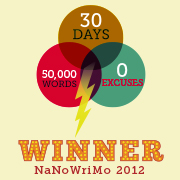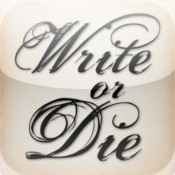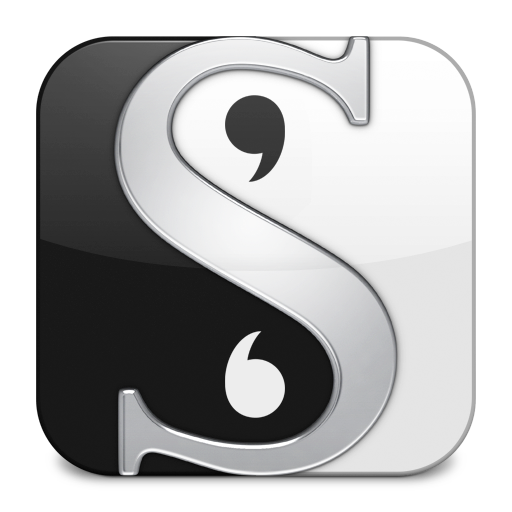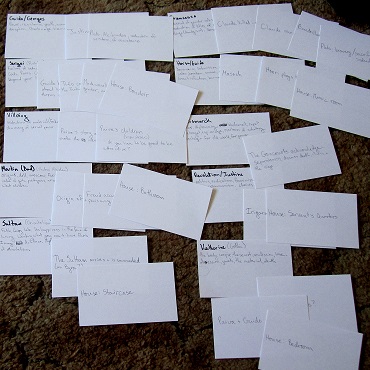Welcome to this side of November, everyone!
If you’re like me, you’ll be eager for anything that can help make your life that little bit easier (read ‘less insane’) this month. And you’ll jump on any occasion to try out new gadgetry.
I haven’t found the software that’ll write my novel for me yet, but I have found many nifty programs, ranging from the simplest to the most elaborate word processors.
They’ll either encourage you or guilt you to the finish line, and better yet – most of them are very cheap, or very free.
I’ve put together a list of them for you, because that’s much easier than writing my novel. So pick and choose what sounds good to you and put together your own customised Software Survival Kit.
The Basics
The first piece of writing kit that springs to most people’s mind is probably MS Word. It comes pre-packaged on some computers, but if you don’t have it, there are plenty of other options. The popular shareware Open Office, available here, is ad-free and easy to use, but isn’t the best in terms of file extension compatibility. While it’s useful to have a basic word processor on hand, it’s often impractical to keep large word-counts in one single document, as you have to wade through dozens of pages to find any given scene.
The Swiss-Army Knives
You might want to consider a software designed for fiction-writing, especially if you’re writing in a non-linear way. My personal favourite is long-time Nano sponsor Scrivener, available for Mac and PC, it offers a conveniently-timed 30-day free trial and will give you a discount on the full product if you win your Nano. It might seem daunting to get your head around, but it’s actually very intuitive and you can read @LorelaiSquared‘s excellent tutorial here.
I have also heard good things about Storyist, but as it is Mac/iPad only, I do not have personal experience of this program. The Nano site calls it ‘a powerful novel writing environment’ with ‘some great self-publishing tools too!’. As it’s a Nano sponsor, it’s offering a special Nanowrimo free trial for November and a 25% discount with the code ‘NANOWRIMO12’.
The Catch-Uppers!
Despite our best intentions, most of us will end up missing a day or two of writing, or fall behind a little bit. There’s nothing wrong with that – I do it every year – but it helps to have strategies to get back ahead.
Mine is timed writing sprints, and particularly Dr Wicked’s infamous Write Or Die, which is tag-lined “Putting the ‘Prod’ in Productivity” with good reason. Instead of rewarding you for good behaviour, Write Or Die ‘punishes’ you for pausing in your writing by flashing red, giving you a reminder that you should be writing, playing an annoying song or slowly deleting your words. You can choose your pace, sprint-duration, grace period and even punishment. You can also go full screen or disable the backspace key to prevent on-the-fly editing. You should try it, it’s fun and it really works – I’m not sure I would have won any of my Nanos without Write Or Die. The web-based version is available for free, and the desktop version (for PC, Mac and Linux) is $10.
I also have a soft spot for Q10: a free full-screen text editor, small enough to fit on a USB drive (on which you back up your novel OFTEN), with customisable formatting, target counts, timer alarms and typewriter sound effects. Which you can swap for Supermario sound effects. Enough said.
A Wealth of Web-Based Apps
If you have an office job, don’t miss an opportunity for some sneaky wordcount-padding at your desk! You could simply write an email to yourself, or use Google Drive to write up and save word files for free. I use Google Drive constantly when it comes to writing articles and sharing to-do lists and resources with friends, but I know concerns have been raised over Google’s privacy and copyright policies. I haven’t read Google Drive’s Terms & Conditions, so I don’t have an informed opinion to offer on the subject, but I do have a nifty alternative app.
750 words is a website designed to host writing privately and for free. Once you’ve created your account, you can type in near full-screen mode, and your writing will be saved – but only for your own eyes. I particularly like getting stats on my writing when I’m done, and collecting cute badges for various achievements.
Finally, every time you need cheering up, go and write a hundred words at Written? Kitten! It is exactly what it sounds like.
Already-behind-Claire,
1202 words
Originally posted at www.nanolondon.org.




